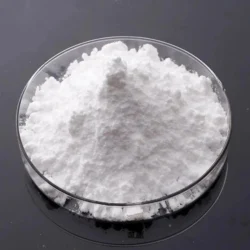The Science Behind Paint Pigments: How They Affect Color and Performance
2024-08-24
Paint pigments are fundamental to the color and performance of paints, dyes, and coatings. Their science involves complex interactions between light, materials, and chemistry. By delving into the science behind paint pigments, you can gain a deeper appreciation of how they work and their impact on various applications. Here’s an exploration of the science behind paint pigments and their role in paint formulations.
1. How Paint Pigments Work
Paint pigments work by interacting with light and absorbing or reflecting specific wavelengths to produce color. The basic principle involves:
Absorption and Reflection: Pigments absorb certain wavelengths of light and reflect others. The color we perceive is the result of the wavelengths that are reflected back to our eyes. For example, a red pigment absorbs most wavelengths except for those in the red spectrum, which are reflected.
Pigment Particle Size: The size of pigment particles can affect the color and performance of the paint. Smaller particles can result in more intense colors and smoother finishes, while larger particles may lead to a rougher texture and less vibrant color.
2. The Role of Pigments in Paint Formulations
Pigments are a critical component of paint formulations, influencing various properties of the final product. Here’s how pigments affect paint:
Color Strength: The strength of the color is determined by the concentration of pigment in the paint. Higher pigment concentrations generally result in more vibrant and intense colors.
Opacity: Pigments contribute to the opacity of paint, which is its ability to cover underlying surfaces. Pigments like titanium dioxide are known for their excellent opacity and are commonly used in white paints.
Tinting and Blending: Pigments can be mixed to create custom colors and shades. The ability to blend and tint pigments allows for a wide range of color possibilities in paint formulations.
3. Factors Affecting Pigment Performance
Several factors influence the performance of paint pigments, including:
Lightfastness: Lightfastness is the ability of a pigment to resist fading when exposed to light. Pigments with high lightfastness retain their color and integrity over time, while those with low lightfastness may fade or change color.
Chemical Resistance: Some pigments are more resistant to chemicals, moisture, and environmental conditions. This resistance is important for paints used in harsh or outdoor environments.
Heat Stability: Heat stability refers to a pigment’s ability to maintain its color and properties at elevated temperatures. This is crucial for applications involving high heat or direct sunlight.
4. Types of Pigments and Their Properties
Different types of pigments have unique properties that make them suitable for various applications:
Organic Pigments: Organic pigments are typically derived from carbon-based compounds and are known for their vibrant colors. They include pigments like quinacridone and phthalocyanine, which offer intense hues but may have varying lightfastness.
Inorganic Pigments: Inorganic pigments are derived from minerals or metal oxides and are known for their durability and opacity. Examples include titanium dioxide, which provides excellent white opacity, and iron oxides, which offer a range of earth tones.
5. Advances in Pigment Technology
Advancements in pigment technology continue to improve the performance and sustainability of paints. Key areas of development include:
Nanotechnology: Nanopigments are being developed to provide enhanced color performance and stability. They offer improved dispersion and consistency in paint formulations.
Eco-Friendly Pigments: There is growing interest in developing sustainable and environmentally friendly pigments. This includes pigments made from renewable resources and those with reduced environmental impact.
6. Practical Applications of Paint Pigments
Understanding the science of paint pigments can help in selecting the right pigment for specific applications:
Art and Design: Artists use pigments to achieve desired effects in their work. Knowledge of pigment properties helps in creating accurate color mixes and achieving the desired finish.
Industrial Coatings: In industrial applications, pigments are chosen based on their durability and performance. For example, pigments used in automotive coatings must withstand exposure to UV light and chemicals.
In conclusion, paint pigments are more than just sources of color—they are integral to the performance and quality of paints and coatings. By understanding the science behind pigments, including their interaction with light and their impact on paint properties, you can make better choices for your projects and applications. Whether you’re involved in art, design, or industrial applications, a solid grasp of pigment science will enhance your understanding and use of color in various mediums.



